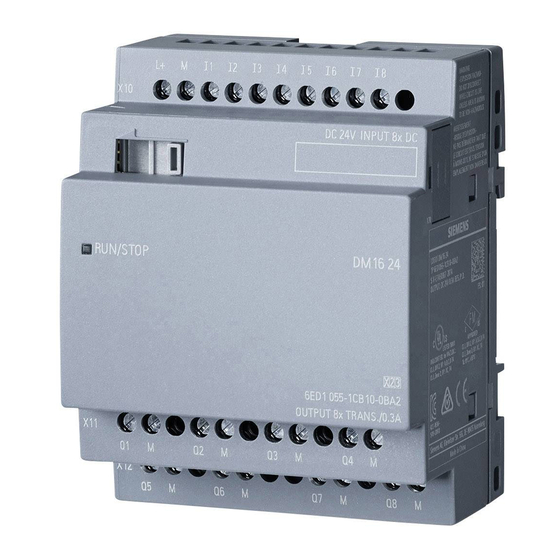
Table of Contents
Advertisement
Welcome to LOGO!
Dear customer,
Thank you for purchasing LOGO!, and congratulations on your decision.
In LOGO! you have acquired a logic module that meets the stringent qual-
ity requirements of ISO 9001.
LOGO! is universal in application. Its comprehensive functionality and
great ease of use make it a highly cost-efficient solution for virtually any
application.
LOGO! documentation
This LOGO! manual tells you how to install, progam and use LOGO!.
In addition, the step-by-step graphical guide shipped with LOGO! and the
LOGO!Soft online help system provide you with the essentials.
LOGO!Soft is a programming package that runs on PCs under WindowsT .
It will help you get to know LOGO! and test, print and archive programs.
Guide to the manual
We have subdivided this manual into 6 chapters:
S
Getting to know LOGO!
S
Installing and wiring LOGO!
S
Programming LOGO!
S
Parameterizing LOGO!
S
Applications
S
Technical data
Additional support
If you have any questions concerning LOGO!, the dealer from whom you
bought it will be glad to help you.
Safety guidelines
This manual contains notices which you should observe to ensure your own personal
safety, as well as to protect the product and connected equipment. These notices are
highlighted in the manual by a warning triangle and are marked as follows according
to the level of danger:
LOGO! manual
EWA 4NEB 712 6006-02
i
Advertisement
Chapters
Table of Contents















Need help?
Do you have a question about the LOGO! Series and is the answer not in the manual?
Questions and answers